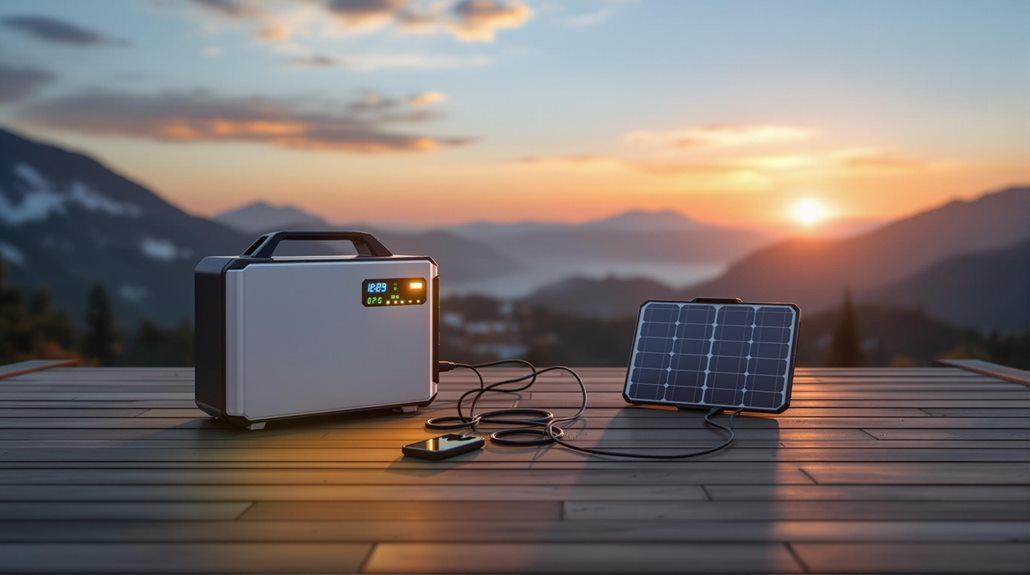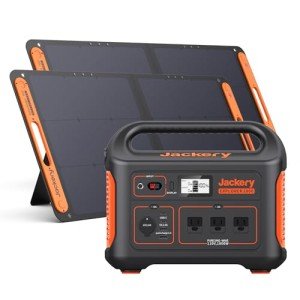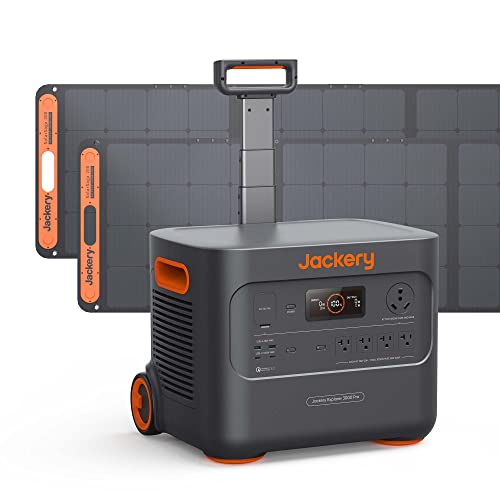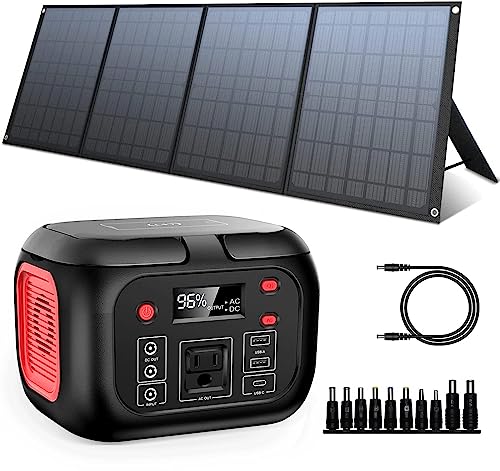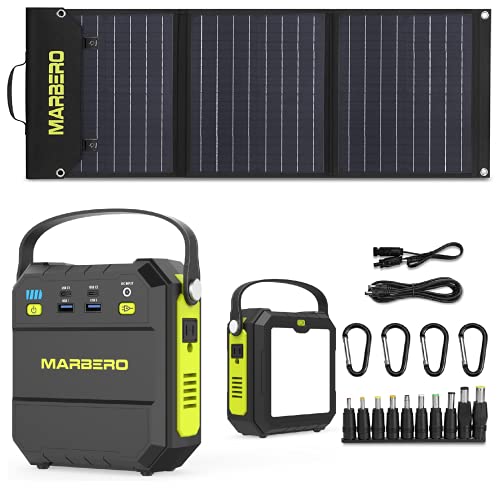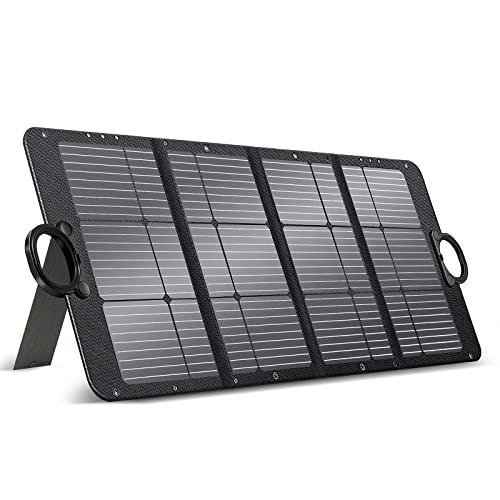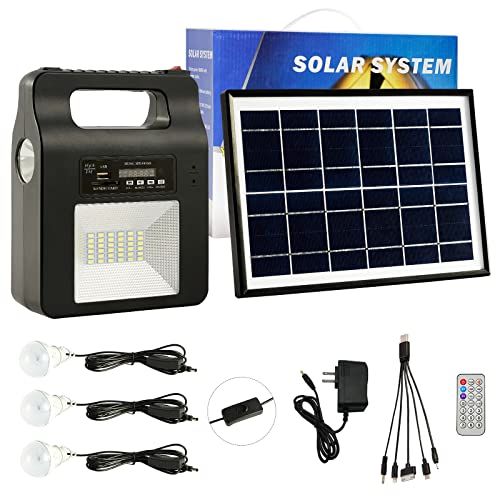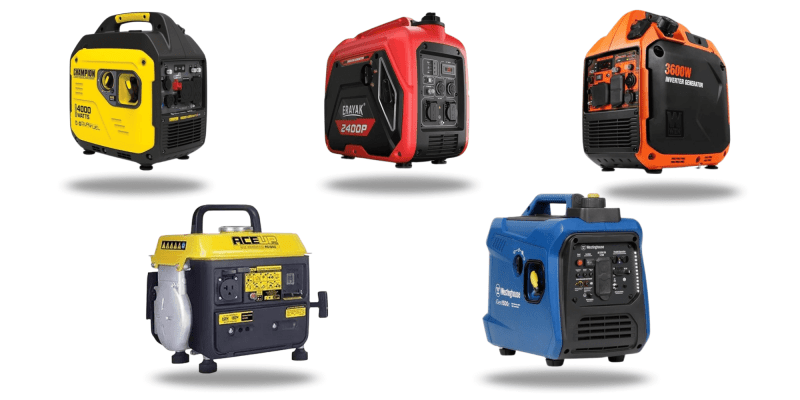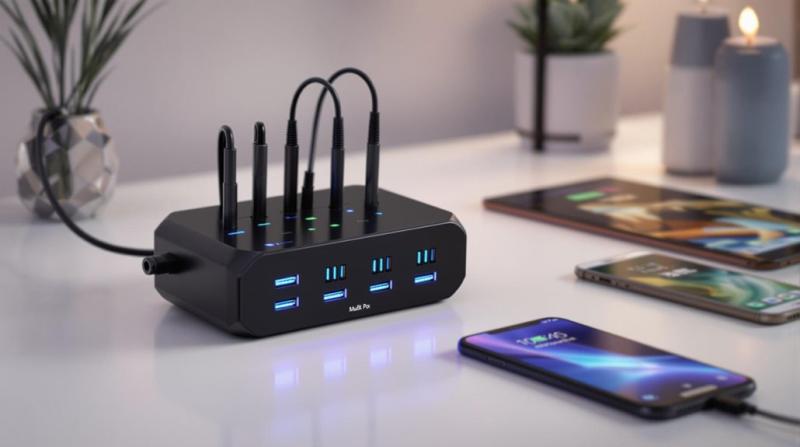Solar portable generators offer you a reliable, eco-friendly backup power solution with significant advantages over traditional generators. You'll benefit from zero emissions, silent operation, and minimal maintenance requirements while enjoying 6-8 hours of continuous power during outages. These systems combine advanced solar technology with efficient battery storage, providing 500-2000 watts of clean electricity for your essential devices. With initial costs offset by federal tax credits and a lifespan of 10-20 years, they're a smart long-term investment. Their plug-and-play design guarantees quick setup for camping, RV use, or emergency preparedness. Understanding their full capabilities will help you maximize your backup power strategy.
Key Takeaways
- Zero emissions and silent operation make solar generators ideal for indoor use during power outages, unlike gas generators.
- Plug-and-play design requires minimal setup and maintenance, with automatic battery management systems handling power optimization.
- Initial investment is offset by zero fuel costs, tax credits, and minimal maintenance expenses over 10-20 years lifespan.
- Reliable power backup for 6-8 hours during outages, with ability to support critical medical devices and communication equipment.
- Lightweight, portable design allows quick deployment anywhere, while supporting multiple device types through various connection ports.
Understanding Solar Generator Power Systems
Today's solar portable generators represent sophisticated power systems that combine photovoltaic technology with advanced energy storage. With top-rated models like Jackery and Goal Zero earning high customer satisfaction, these generators have become increasingly reliable for backup power needs. When you're looking at these systems, you'll find they integrate solar panels, battery storage, and inverter technology to create a reliable source of renewable energy. The units convert sunlight through photovoltaic cells and store the power in lithium-ion batteries, typically offering between 500 and 1500 watt-hours of capacity.
Your portable generator will include a charge controller that manages power flow from the solar panels to the battery, ensuring ideal charging and system protection. With power output ranging from 500 to 2000 watts, you'll be able to run various electronic devices through multiple connection options, including AC outlets, USB ports, and DC connections. The system's modular design means you can adapt it to your specific needs, while smart power management features help maximize efficiency.
Understanding these components is essential for effective use. The charge time will vary between 3-8 hours, depending on your solar panels' efficiency and weather conditions, giving you a predictable power supply for backup situations.
Environmental Benefits and Safety Features
Beyond understanding the technical aspects of solar generators, their environmental impact and safety features set them apart from traditional power solutions. When you choose a solar generator, you're opting for zero emissions power production that substantially reduces your carbon footprint compared to conventional fuel-based alternatives. Modern solar generators like the Bluetti AC200P output deliver impressive performance through multiple charging ports while maintaining eco-friendly operation. These environmentally friendly units generate clean electricity without producing harmful combustion byproducts, making them an indispensable tool in personal sustainable power initiatives.
The safety advantages of solar generators are equally impressive, particularly their silent operation at just 30-40 decibels, which makes them suitable for both indoor and outdoor use. You'll never have to worry about carbon monoxide poisoning, a common concern with gas-powered generators, as solar units produce no toxic fumes. This renewable energy solution allows you to power your devices while contributing to environmental conservation efforts.
Cost Analysis and Financial Returns
The financial landscape of solar portable generators presents a compelling investment opportunity, with initial costs ranging from $300 to $2,000. When you're evaluating your initial investment, you'll need to contemplate your power requirements and desired battery capacity to guarantee you're getting the right energy storage solution for your needs. Battery cycle lifespans fluctuate markedly between types, with lithium options lasting 2,000 to 5,000 cycles compared to lead-acid alternatives.
While the upfront cost might seem substantial, you'll find significant savings through reduced utility bills and minimal maintenance expenses. Federal tax credits can offset up to 30% of your investment, and many utility companies offer additional incentives for adopting renewable power solutions. The growing market for solar generators indicates improving technology and potential price reductions in the future, making your investment increasingly valuable over time.
Your solar generator's continuous power output capability, combined with its 10-20 year lifespan, translates to substantial long-term savings on electricity bills. Unlike traditional generators, you won't face ongoing fuel costs, and the system's durability means minimal maintenance expenses. This investment not only protects you against rising energy costs but can also enhance your property's value while providing reliable backup power during outages.
4.11 out of 5 starsJackery Solar Generator 1000, 1002Wh Capacity with 2xSolarSaga 100W Solar Panels, 3x1000W AC Outlets, Portable Power Station Ideal for Home Backup, Emergency, RV Outdoor Camping
The Ultimate Power Solution for All Your Outdoor Adventures
Product information
Product Review Score
Product links
Setup and Installation Requirements
Setting up a solar portable generator proves remarkably straightforward, requiring minimal technical expertise or specialized tools. You'll find that most portable solar generators feature plug-and-play components, allowing you to connect your devices directly through various outlets without complex wiring or professional assistance. Pure sine wave inverters protect sensitive devices while preventing energy waste during operation, making them an essential feature for reliable backup power.
To maximize your generator's solar potential, you'll need to position your solar panels in a location with consistent sunlight exposure. Angle the panels between 30-45 degrees to optimize energy capture throughout the day. When selecting your power station, consider the battery capacity that matches your backup power needs, typically ranging from 500 to 2000 watts for residential use.
The installation process simply involves connecting your solar panels to the power station and ensuring all components are properly linked. You won't need permanent mounting or complex electrical work, making these systems ideal for flexible deployment. Your portable solar generator's watt capacity should align with your power requirements, so take time to calculate your essential device loads before setup. Once configured, you'll have a reliable backup power solution that you can easily relocate or adjust as needed.
Power Output and Storage Capacity
Understanding power output and storage capacity helps you make informed decisions about your portable solar generator's capabilities. When selecting a generator for home use, you'll find power outputs typically range from 500 to 2000 watts, allowing you to run multiple devices simultaneously. Popular models like the Goal Zero Yeti series offer versatile output options for powering various devices. This means you can power essential electronics during outages while maintaining your daily routine.
Your generator's battery capacity, measured in watt-hours, determines how long you can operate your devices. Most portable solar generators offer between 500-1500 watt-hours of storage capacity, utilizing efficient lithium-ion technology for reliable energy storage. To calculate runtime for your devices, multiply the battery capacity by 0.85 and divide by your device's wattage. For example, a 1000 watt-hour generator can power a 100-watt device for approximately 8.5 hours.
These generators offer flexible charging options, taking 3-8 hours to reach full capacity depending on your charging method and conditions. You can charge through solar panels, wall outlets, or car adapters, giving you versatility in maintaining power availability. This adaptability makes solar generators particularly reliable for backup power scenarios.
$2,399.00
4.31 out of 5 starsJackery Solar Generator PRO 400W with 2x Panels
A Reliable and Powerful Off-Grid Energy Solution for All Your Adventures
Product information
Product Review Score
Product links
Emergency Preparedness and Reliability
During emergencies, solar portable generators stand out as dependable power solutions that keep your essential devices running without the risks associated with traditional fuel-based alternatives. These zero-emission electricity generators provide reliable emergency backup power while ensuring your safety through silent operation and indoor compatibility.
When power outages strike, you'll appreciate how your battery backup system seamlessly shifts to keep critical devices functioning. Your portable solar power unit can maintain operation for 6-8 hours, depending on your power needs, supporting everything from medical equipment to communication devices. With storage capacities ranging from 500-1500 watt-hours, you'll have sufficient power to run essential household appliances during extended blackouts.
In natural disasters or situations where traditional infrastructure fails, generators provide critical support for emergency preparedness plans. You can quickly deploy these units to remote locations, ensuring continuous power supply where it's needed most. The combination of reliability, portability, and solar power makes these generators an ideal choice for maintaining electrical functionality during unpredictable situations, while their zero-emission operation keeps your indoor environment safe and clean.
Maintenance and Long-Term Performance
Maintaining a solar portable generator couldn't be simpler, thanks to its streamlined design and lack of moving parts. You'll spend markedly less time and money on maintenance compared to traditional gas generators, as your primary tasks only include occasional solar panels cleaning and battery health monitoring. These routine checks typically require less than an hour of your time each year.
The lithium-ion battery in your solar generator comes equipped with sophisticated battery management systems that automatically optimize charging cycles and protect your power storage unit. You won't need to worry about overcharging or complex maintenance procedures, as these systems handle the technical aspects for you. With proper care, you can expect your generator's battery to maintain 80% of its original capacity for 10-20 years, ensuring reliable long-term performance.
To maximize your generator's efficiency, focus on strategic battery usage patterns and consistent charging practices. By following these simple maintenance guidelines and letting the built-in management systems do their work, you'll maintain peak performance and extend your solar generator's operational lifespan while enjoying consistent, reliable power backup.
Application Scenarios and Usage Options
Solar portable generators serve countless practical applications, from powering essential devices during emergencies to supporting outdoor adventures. With their lightweight design and advanced lithium-ion technology, these backup power solutions offer reliable performance for various scenarios, whether you're camping in remote locations or preparing for unexpected power outages.
You'll find these portable generators particularly useful during outdoor events, where access to traditional power sources might be limited. Their battery storage capacity of 500-1500 watt-hours guarantee you can keep multiple devices running, from smartphones to small appliances. For off-grid power needs, solar power provides a sustainable solution that's both quiet and environmentally friendly, producing zero emissions during operation.
Emergency preparedness becomes more manageable with these systems, as you can easily transport and set up your renewable energy source wherever it's needed. The versatile nature of portable generators, typically weighing between 10-30 pounds, makes them ideal for RV enthusiasts, remote workers, and tiny home residents. With solar charging times of 3-8 hours, you'll have consistent access to clean, reliable power throughout your activities.
Frequently Asked Questions
Is It Worth Buying a Portable Solar Generator?
Yes, a portable solar generator is worth your investment, especially if you value energy independence and sustainable living. It's an excellent off-grid solution for emergency preparation and home backup power. You'll appreciate its camping convenience during outdoor adventures, while also contributing to power resilience. With advancing renewable technology, these portable power systems offer reliable, clean energy that's perfect for both emergency situations and everyday use.
What Are the Disadvantages of a Solar Generator?
Like a thirsty camel in the desert, solar generators come with notable limitations you'll need to contemplate. You'll face a steep initial investment, and the generators' low power output means you can't run multiple high-energy devices. You're also at nature's mercy since they're weather dependent and require lengthy charging times. The limited battery capacity degrades over time, and you'll need adequate storage space plus regular maintenance to keep them functioning ideally.
What Are the Benefits of Solar Powered Generators?
You'll find multiple advantages with solar powered generators, starting with clean energy production and renewable power that's eco-friendly. They offer silent operation and require low maintenance, making them ideal for various settings. You're getting a cost-effective solution with flexible charging options and minimal emissions. Their long-lasting components and compact design provide reliable power while taking up less space, and you won't need to worry about fuel storage or frequent repairs.
Do I Need a Backup Generator With Solar Panels?
You'll benefit from a backup generator with your solar panels if you're concerned about power outages or live in an off-grid/remote location. It's essential for home emergency situations when solar production is limited by weather or nighttime conditions. Whether you're planning for disaster preparedness, protecting critical equipment, or need reliable RV power, a backup generator complements your renewable solution. It's particularly valuable for camping needs and ensuring continuous power during extended cloudy periods.
